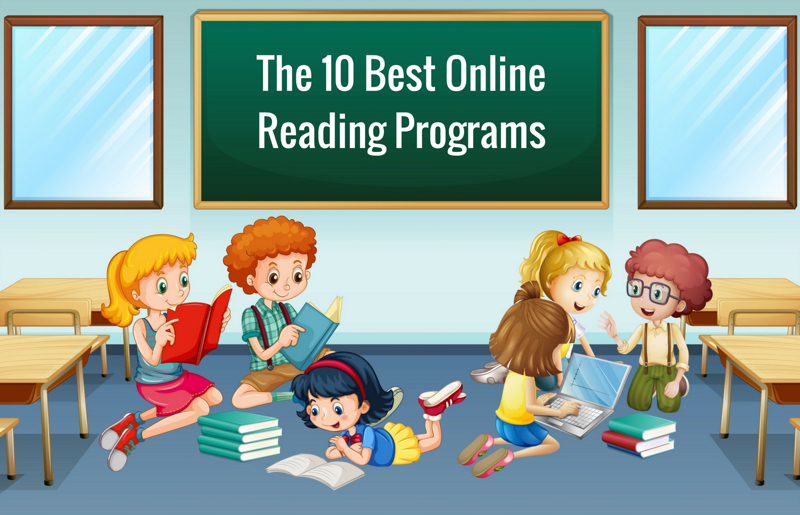Student Loan Forgiveness for Teachers

Find your perfect college degree
 College and graduate school tuition in the US is very expensive. US citizens who can’t afford to go to college can take out a loan. Paying off these loans could potentially take a lifetime, especially if you don’t have a high paying job or career. Student loans must be paid off whether you complete your education or not, or whether you are employed or not.
College and graduate school tuition in the US is very expensive. US citizens who can’t afford to go to college can take out a loan. Paying off these loans could potentially take a lifetime, especially if you don’t have a high paying job or career. Student loans must be paid off whether you complete your education or not, or whether you are employed or not.
What is the Teacher Loan Forgiveness Program?
The Teacher Loan Forgiveness Program (TLFP) was instituted in order to encourage citizens into the teaching profession for the benefit of the school system. Low-income families typically live in poorer school districts. This means that teachers’ salaries are lower than other places in the US. For individuals such as these, an incentive to enter into elementary and secondary school education is quite low. In order to boost incentives, the government instituted the TLFP so that educators can take out Federal Direct loans or Federal Stafford loans, teach for several years and qualify for a loan balance forgiveness of up to $17,500. For those who have taught for at least five years, they may qualify up to $5,000 of loan forgiveness.
Why Do Teachers Especially Need a Loan Forgiveness Program?
Teachers in the US are most likely to struggle paying off tuition given that most US teaching positions’ salaries are not very competitive, especially if a teacher works at a public school in a poor neighborhood or district. For candidates such as these, the US government recognizes the importance of education and what assets that teachers are to the US school system. In order to show the government’s recognition and appreciation for individuals such as these, the student loan forgiveness programs were instituted.
The TLFP was a Congressional response to the shortage of teachers in the US. It was a direct response to the fact that teachers were gone under appreciated, underpaid and not recognized for their hard work. The cycle of debt that teachers get into by taking out a student loan to receive education and not be able to fully pay off the debt because their job’s pay is too low was a problematic reason for the drop in teachers in the US. The loan program went into effect on October 1, 1998, so you must have borrowed funds since October 1, 1998. Any loans taken out prior to that date will not qualify for loan forgiveness.
Teaching as a Public Service and Meeting the Criteria
A qualification for loan forgiveness is working in public service. Teachers qualify for loan forgiveness for their positions dedicated to public education. In order to qualify for this, they have to make at least a hundred and twenty full payments and not have been in default (equivalent to a payment per month for ten years).
There are also special requirements or eligibility for TLFP depending on the type of loan that was taken out, the number of years he or she has been working as a teacher, and how much his or her loan amount is to date. In order to process the application for TLFP, you must familiarize yourself with the ins and outs of administering the documentation. Be sure to make face time with your chief administrative officer at your school. This person may be the human resources department head, the superintendent, board member, principal, vice principal or some other affiliated educational member head. This person is the one who can execute documentation for administering the process to have your application evaluated, forwarded and approved by the loan forgiveness program.
A Loan Forgiveness is Not a Refund
 To dispel any confusion, the loan forgiveness program for teachers does not allow refunds. The forgiveness program applies specifically to outstanding balances. So, for instance, if you paid off your student loans in full before or by the time you may be qualified for the loan forgiveness application, congratulations on becoming debt-free, however, you no longer need to apply for the loan forgiveness program. This program is reserved specifically for those who need the program to erase any outstanding debt so that he or she may lead a life and career burden-free. If you find it difficult to pay the monthly installments for your loans, consider the forbearance application, which may allow you to postpone any outstanding debts until you reach a close proximity to the five-year qualification term.
To dispel any confusion, the loan forgiveness program for teachers does not allow refunds. The forgiveness program applies specifically to outstanding balances. So, for instance, if you paid off your student loans in full before or by the time you may be qualified for the loan forgiveness application, congratulations on becoming debt-free, however, you no longer need to apply for the loan forgiveness program. This program is reserved specifically for those who need the program to erase any outstanding debt so that he or she may lead a life and career burden-free. If you find it difficult to pay the monthly installments for your loans, consider the forbearance application, which may allow you to postpone any outstanding debts until you reach a close proximity to the five-year qualification term.
There is also a website dedicated to finding a list of schools and districts that may qualify for the low-income schools for teacher cancellation. It is a directory listing all the locations and schools that qualify for loan erasure. Be advised that the list changes annually. So if your school qualifies for one year but doesn’t a second year, be sure to stay apprised of the shifts.
Exceptions
Some exceptions to the TLFP are that teacher’s aides do not qualify for loan forgiveness. Only full time teachers are considered for the loan forgiveness application. Staff members who work in educational administration do not qualify for the TLFP. Teachers’ aides and educational administrative staff, however, may qualify for the federal loan forgiveness program or the Public Service Loan Forgiveness program. The specifics for qualification in each program may vary, however, if you are an individual who works for a public school or institution, you may qualify for either of these loan forgiveness programs, which take into consideration any loans taken out since October 1, 2007.
Other Federal Loan Forgiveness Programs
Federal Loan Forgiveness is a government program. It encourages all individuals who participate in public service to continue their great work in the field for the incentive of loan forgiveness. Public Service Loan Forgiveness erases your remaining loan balance after you’ve worked a public service job for at least ten years. The types of jobs that may qualify you for eligibility are positions at local, state or federal government agency, organization or entity, or a not-for-profit organization that is officially established as a tax-exempt entity by the Internal Revenue Service (IRS). You can tell which organizations are tax exempt not-for-profits because they usually have 501(c)(3) after their entity title on listings. The type of work you do at said entity does not matter. Whether it’s just you punching in data or working as a Vice President, the qualification is the same. As long as you’ve worked there for a minimum of ten years, you’ll qualify for federal loan forgiveness. Public Service Loan Forgiveness is just as important as a teaching position because typically, these types of jobs are integrated into the overall educational system in the US. Non-profit organizations are largely dedicated to culture and art awareness and expansion.
Be advised that the TLFP and the public service loan forgiveness program are not identical. Loan forgiveness for those who have served in the military, navy or army. Each of these programs and their dedicated professions have varied circumstances.
Incomplete Academic Year
For those who were unable to complete their academic year in education or teaching, depending on circumstances, the TLFP may still recognize that year toward the required five-year completion. The rules state that the candidate must have completed at least a half of the academic year, that the administrative officer or employer recognizes the candidate’s work to have fulfilled the contractual tasks, and that you have a specific reason for why you were unable to complete that year. Such reasons may include a return to education for post secondary learning, a family or medical leave, or a call to active duty for more than thirty days as a member of the federal reserve or armed forces.
Other Things to Consider for Qualification
– A certification as a teacher is required, which means that as a candidate, you must hold a bachelor’s degree or at the very least exhibit rigorous understanding and training to be able to teach a school curriculum at the basic elementary level.
– In order to qualify as a loan forgiveness candidate as a special education professional, you must qualify as a licensed teacher registered by the state education agency that allows you to provide special educational service to students who are disabled. Qualifications of such services include physical, recreational and occupational therapy. Speech and language pathology and/or audiology is also accepted.
– It is wise to look into which districts or locations are suffering from a shortage of teachers. The state education agency provides such list of teacher shortage areas, which may make you qualified for loan forgiveness. Research beforehand is key to everything. The breakdown of loan erasure is as follows: fifteen percent for the first and second year, twenty percent for the third and fourth year, and thirty percent for the fifth year. The cancellation includes any interests that your loans might have accrued.




